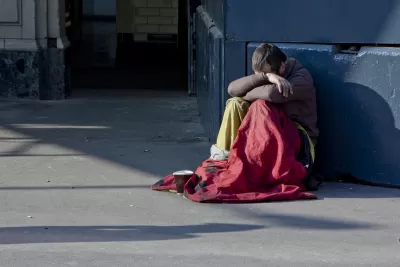Formerly playing host to almost double the homeless population of Dallas, Houston has addressed the problem with some success over the past decade. Meanwhile, rising costs have fueled a growing crisis in Dallas.

Homeless counts in the Houston area show a very promising 54 percent decrease since 2011, Juan Pablo Garnham reports. Meanwhile, the problem is growing in other major Texas metros, especially Dallas.
Part of the secret behind Houston's success, Garnham writes, is HUD assistance. In a process beginning in 2010, HUD designated the Houston metro area as a priority community of assistance, opening up channels of funding. Beginning with military veterans, the city launched a plan that relied heavily on improved coordination between agencies and organizations. The Houston Housing Authority has been a central part of the effort to create permanent supportive housing for those on the streets.
Houston also debuted a digital system to track cases of homelessness and manage responses. "Most cities today have [a Homeless Management Information System] in place, but Houston was quick to adopt it, and that helped organizations strategize, analyze, share information and find personalized solutions," Garnham writes.
Meanwhile in Dallas, strong growth and a bumper housing market are leaving more and more people behind. "'Our homelessness numbers reflect the increase in housing costs across the Metroplex,' said Daniel Roby, CEO of the Austin Street Center, one of the biggest shelters in the city."
According to Roby, Houston currently has "some governmental advantages" over Dallas, including "a strong mayoral form of government." He reflected on how difficult it can be to build a coordinated response in his city. "We [in Dallas] need to collaborate to get the support here, while [in Houston], the mayor can just move on with the mayor's agenda."
FULL STORY: Why homelessness is going down in Houston but up in Dallas

Maui's Vacation Rental Debate Turns Ugly
Verbal attacks, misinformation campaigns and fistfights plague a high-stakes debate to convert thousands of vacation rentals into long-term housing.

Planetizen Federal Action Tracker
A weekly monitor of how Trump’s orders and actions are impacting planners and planning in America.

In Urban Planning, AI Prompting Could be the New Design Thinking
Creativity has long been key to great urban design. What if we see AI as our new creative partner?

How Trump's HUD Budget Proposal Would Harm Homelessness Response
Experts say the change to the HUD budget would make it more difficult to identify people who are homeless and connect them with services, and to prevent homelessness.

The Vast Potential of the Right-of-Way
One writer argues that the space between two building faces is the most important element of the built environment.

Florida Seniors Face Rising Homelessness Risk
High housing costs are pushing more seniors, many of them on a fixed income, into homelessness.
Urban Design for Planners 1: Software Tools
This six-course series explores essential urban design concepts using open source software and equips planners with the tools they need to participate fully in the urban design process.
Planning for Universal Design
Learn the tools for implementing Universal Design in planning regulations.
Gallatin County Department of Planning & Community Development
Heyer Gruel & Associates PA
JM Goldson LLC
City of Camden Redevelopment Agency
City of Astoria
Transportation Research & Education Center (TREC) at Portland State University
Jefferson Parish Government
Camden Redevelopment Agency
City of Claremont





























